
El Chaltén: The Trekking Capital of Argentina
Discover El Chaltén, Argentina's Trekking Capital, where towering peaks, pristine rivers, and scenic trails await in the heart of Patagonia's stunning landscapes.
Nestled in the heart of Patagonia, El Chaltén is a small village that offers some of the most breathtaking landscapes in Argentina. Known as the Trekking Capital of the country, this destination is a haven for outdoor enthusiasts. As you enter El Chaltén, the towering peaks of Mount Fitz Roy and Cerro Torre immediately capture your attention. The village itself feels like a hidden gem, surrounded by majestic mountains, crystal-clear rivers, and expansive glaciers. El Chaltén is part of the Los Glaciares National Park, a UNESCO World Heritage site. The park is home to a diverse range of flora and fauna, making it a paradise for nature lovers. Hiking trails of varying difficulty levels crisscross the area, leading you through lush forests, past roaring waterfalls, and up to scenic viewpoints. Popular trails include the Laguna de los Tres and Laguna Torre, both offering stunning views of the iconic mountain landscapes. Despite its remote location, El Chaltén has a charming village atmosphere with cozy lodges, vibrant restaurants, and local craft shops. The village caters well to tourists, offering guided tours, equipment rentals, and plenty of information on the best hiking routes. Whether you're an experienced trekker or a casual hiker, El Chaltén provides an unforgettable experience in one of the most beautiful regions of South America.
Local tips in El Chalten
- Visit between November and March for the best weather and hiking conditions.
- Wear layers and be prepared for sudden weather changes.
- Start your hikes early to avoid crowds and enjoy the best light for photography.
- Bring cash, as there are limited ATMs and many places don't accept cards.
- Try the local cuisine, especially Patagonian lamb and trout.
- Stay hydrated and bring a reusable water bottle; the tap water is safe to drink.
El Chaltén: The Trekking Capital of Argentina
Nestled in the heart of Patagonia, El Chaltén is a small village that offers some of the most breathtaking landscapes in Argentina. Known as the Trekking Capital of the country, this destination is a haven for outdoor enthusiasts. As you enter El Chaltén, the towering peaks of Mount Fitz Roy and Cerro Torre immediately capture your attention. The village itself feels like a hidden gem, surrounded by majestic mountains, crystal-clear rivers, and expansive glaciers. El Chaltén is part of the Los Glaciares National Park, a UNESCO World Heritage site. The park is home to a diverse range of flora and fauna, making it a paradise for nature lovers. Hiking trails of varying difficulty levels crisscross the area, leading you through lush forests, past roaring waterfalls, and up to scenic viewpoints. Popular trails include the Laguna de los Tres and Laguna Torre, both offering stunning views of the iconic mountain landscapes. Despite its remote location, El Chaltén has a charming village atmosphere with cozy lodges, vibrant restaurants, and local craft shops. The village caters well to tourists, offering guided tours, equipment rentals, and plenty of information on the best hiking routes. Whether you're an experienced trekker or a casual hiker, El Chaltén provides an unforgettable experience in one of the most beautiful regions of South America.
When is the best time to go to El Chalten?
Iconic landmarks you can’t miss
Chorrillo del Salto
Explore the breathtaking Chorrillo del Salto waterfall in El Chaltén, Argentina, a paradise for hikers and nature enthusiasts alike.

Rancho Grande Hostel y Restaurante 24 hs.
Discover the charm of Rancho Grande Hostel y Restaurante, where comfort meets adventure in the heart of El Chaltén's breathtaking landscapes.
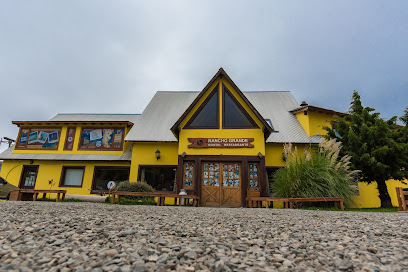
Laguna de los Tres
Explore the breathtaking natural beauty of Laguna de los Tres, a premier hiking destination in El Chaltén, Argentina, with stunning views and diverse wildlife.

La Cervecería Chaltén
Experience the flavors of Patagonia at La Cervecería Chaltén, a brewery and restaurant offering local dishes and craft beers in a stunning setting.

Sendero al Fitz Roy
Discover the breathtaking Sendero al Fitz Roy, a must-visit hiking trail in El Chaltén, Argentina, offering stunning views of iconic Patagonian peaks.

Heladería Domo Blanco
Experience the finest ice cream in El Chaltén at Heladería Domo Blanco, where local flavors meet artisanal craftsmanship amid stunning Patagonian landscapes.

Parrilla La Oveja Negra
Experience the best of Argentine cuisine at Parrilla La Oveja Negra in El Chaltén, where exceptional grilled meats meet stunning mountain views.

La Tapera
Discover the flavors of Patagonia at La Tapera, El Chaltén's premier restaurant for authentic Argentine cuisine and warm hospitality.

Mirador del Fitz Roy
Experience the breathtaking views at Mirador del Fitz Roy, a scenic spot in Patagonia, Argentina, where nature's beauty comes alive.

Complejo turístico El Relincho
Discover the perfect blend of adventure and comfort at Complejo Turístico El Relincho, your gateway to the stunning landscapes of El Chaltén, Patagonia.

Patagonicus
Discover the perfect blend of delicious pizza and cozy accommodations at Patagonicus in El Chaltén, a must-visit destination for every traveler.
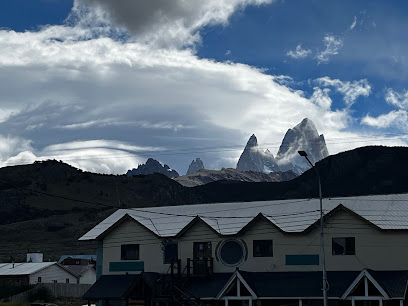
PAISA High Mountain Coffee
Discover the heartwarming flavors of Argentina at PAISA High Mountain Coffee in El Chaltén, where every sip tells a story of adventure and local culture.

Pangea Restaurant
Experience the flavors of Patagonia at Pangea Restaurant, a must-visit dining destination in El Chaltén, where local cuisine meets stunning mountain views.

Patagonia Travellers Hostel
Discover adventure and camaraderie at Patagonia Travellers Hostel in El Chaltén, your gateway to the stunning landscapes of Patagonia.

Cúrcuma
Discover the best vegan and gluten-free dishes in El Chaltén at Cúrcuma, where health meets gourmet in a cozy atmosphere.
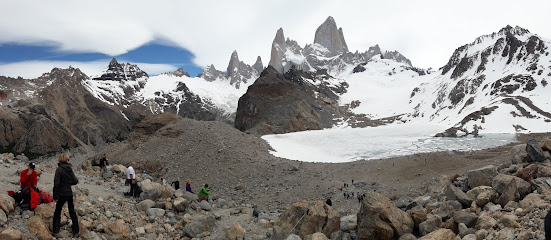
Unmissable attractions to see
Laguna de los Tres
Explore the stunning landscapes of Laguna de los Tres, a hidden gem in El Chaltén, where turquoise waters meet majestic mountain peaks.

Glaciar Huemul
Explore the breathtaking landscapes of Glaciar Huemul, a national park in El Chaltén, Argentina, where adventure meets stunning natural beauty.

Estancia Los Huemules
Immerse yourself in the pristine beauty of Estancia Los Huemules, a nature preserve in El Chaltén, where adventure and tranquility await every traveler.

Puerto Bahía Tunel
Experience the breathtaking beauty of Puerto Bahía Tunel, a captivating fishing pier in El Chaltén, Argentina, surrounded by stunning Patagonian landscapes.

Madsen House Museum
Explore the Madsen House Museum in El Chaltén for a unique journey through Patagonia's history and culture amidst stunning natural beauty.

Essential places to dine
Restaurante Ahonikenk Chalten Fonda Patagonia
Experience authentic Patagonian flavors at Restaurante Ahonikenk Chalten Fonda in El Chaltén - a culinary delight amidst breathtaking landscapes.

La Cervecería Chaltén
Discover La Cervecería Chaltén: A perfect blend of craft beer and local cuisine amidst the breathtaking landscapes of Patagonia.

La Waflería
Experience the unique flavors of Patagonia at La Waflería in El Chaltén - where delicious waffles meet stunning mountain views.

Don Guerra
Experience authentic Argentine cuisine at Don Guerra in El Chaltén - where local flavors meet cozy ambiance.

Maffia
Experience authentic Argentine cuisine in El Chaltén at Maffia – where flavor meets breathtaking views.

Parrilla La Oveja Negra
Experience authentic Argentine parrilla at Parrilla La Oveja Negra in El Chaltén - where flavor meets adventure amidst stunning landscapes.

La Tapera
Experience authentic Argentine cuisine at La Tapera in El Chaltén, where local flavors meet breathtaking landscapes.

Bourbon Smokehouse
Discover the flavors of Patagonia at Bourbon Smokehouse, where local ingredients meet culinary creativity in El Chaltén's vibrant gastropub.

Mathilda. Resto bar. Casa de té
Experience the flavors of Argentina at Mathilda Resto bar in El Chaltén - where culinary excellence meets stunning mountain views.

El Parador Comida Para Llevar
Discover authentic Argentine flavors at El Parador Comida Para Llevar in El Chaltén—perfect for quick bites before your next adventure.

Pangea Restaurant
Discover Pangea Restaurant in El Chaltén: A perfect blend of Argentine cuisine and breathtaking mountain views.

The Asadores
Discover exquisite Argentine cuisine at The Asadores, nestled in El Chaltén's stunning landscapes, perfect for adventurous food lovers.

Patagonia Rebelde
Discover the flavors of Argentina at Patagonia Rebelde in El Chaltén - where culinary excellence meets stunning Patagonian landscapes.

Fuegia Bistro
Experience authentic Argentine cuisine at Fuegia Bistro in El Chaltén, where local flavors meet warm hospitality amidst breathtaking Patagonian scenery.

Resto El Muro
Experience authentic Argentine flavors at Resto El Muro in El Chaltén – where culinary excellence meets breathtaking nature.

Markets, malls and hidden boutiques
Viento Oeste
Explore El Chaltén with Viento Oeste, your ultimate destination for local crafts, quality hiking gear, and essential maps.

Camping Center
Explore the great outdoors with top-quality gear from Camping Center in El Chaltén, your hub for adventure in Patagonia.

BajoZero
Discover outdoor apparel at BajoZero in El Chaltén, your essential stop for exploring the breathtaking landscapes of Patagonia.

Patagonia Hikes
Discover Patagonia Hikes: Your go-to store for top-quality outdoor gear in the heart of El Chaltén, perfect for unforgettable adventures in Patagonia.
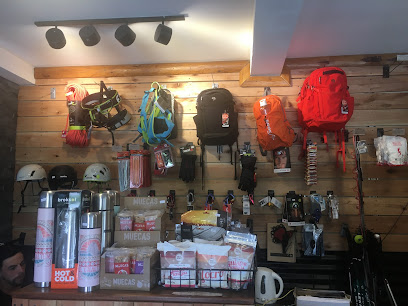
Puentes Amarillos Tienda Natural
Discover the finest selection of natural goods and fresh produce at Puentes Amarillos Tienda Natural in the heart of El Chaltén.

Marcopolo
Explore Marcopolo in El Chaltén: A charming bookstore offering a curated selection of literature in the heart of Patagonia's breathtaking landscapes.

Etherni
Discover unique gifts and clothing that embody the spirit of Patagonia at Etherni, the charming gift shop in El Chaltén.

SOA El Chalten
Explore stylish women’s clothing inspired by the breathtaking landscapes of El Chaltén, where fashion meets adventure in the heart of Patagonia.

La Tienda Rental & Outdoor Shop
Discover adventure in Patagonia with quality gear from La Tienda Rental & Outdoor Shop, your go-to outdoor clothing and equipment store in El Chaltén.

Sirio
Discover unique souvenirs and local crafts at Sirio, a charming store in El Chaltén, embodying the spirit of Patagonia.

El Mundo de Sofi
Explore El Mundo de Sofi, a charming gift shop in El Chaltén offering unique local crafts and souvenirs that capture the spirit of Patagonia.

El Viento Nos Amontona
Explore the vibrant artisan offerings at El Viento Nos Amontona, El Chaltén's premier shopping destination for unique souvenirs and local crafts.

El Hornero
Discover the essence of Patagonia at El Hornero, a charming clothing store in El Chaltén offering unique handmade items.

LA ROCA
Explore La Roca in El Chaltén for unique clothing and accessories that embody the spirit of Patagonia's stunning landscapes.

Paseo de los Artesanos
Discover the essence of El Chaltén at Paseo de los Artesanos, where local craftsmanship meets unforgettable souvenirs.

Essential bars & hidden hideouts
Restaurante Ahonikenk Chalten Fonda Patagonia
Experience the authentic flavors of Patagonia at Restaurante Ahonikenk Chalten Fonda Patagonia, a culinary gem in the heart of El Chaltén.

La Waflería
Discover the delightful flavors of El Chaltén at La Waflería, where delicious waffles and a cozy atmosphere await every visitor.

La Cervecería Chaltén
Experience the best of Patagonia's flavors at La Cervecería Chaltén, a unique restaurant and brewery in the heart of El Chaltén.

Don Guerra
Experience the flavors of Patagonia at Don Guerra, El Chaltén's premier restaurant, serving local delicacies in a cozy atmosphere.

La Tapera
Experience the rich flavors of Patagonia at La Tapera, a top-rated restaurant in El Chaltén, specializing in local and international cuisine.

Bourbon Smokehouse
Discover the flavors of Patagonia at Bourbon Smokehouse, a premier gastropub in El Chaltén offering delicious food and a vibrant atmosphere.

Mathilda. Resto bar. Casa de té
Experience the essence of Patagonian cuisine at Mathilda Resto Bar, a cozy retreat in El Chaltén with stunning views and hearty dishes.

Pangea Restaurant
Discover the flavors of Patagonia at Pangea Restaurant in El Chaltén, a perfect blend of local cuisine and stunning views.

Nomade Resto Bar
Indulge in delightful local cuisine at Nomade Resto Bar, a culinary haven in the heart of El Chaltén, perfect for adventurers and food lovers alike.

La Zorra Taproom Chaltén
Experience the essence of Patagonia at La Zorra Taproom, a brewpub offering diverse craft beers and a lively atmosphere in El Chaltén.

Fresco bar
Experience the heart of Patagonia at Fresco Bar, where craft beer meets local cuisine in a unique and inviting atmosphere.

Bandidos Patagónicos
Discover the flavors of Patagonia at Bandidos Patagónicos, where local ingredients and warm hospitality create an unforgettable dining experience.

La Viñeria Grill & Pasta
Experience the best of Argentine cuisine and fine wines at La Viñeria Grill & Pasta in El Chaltén, a culinary haven in Patagonia.
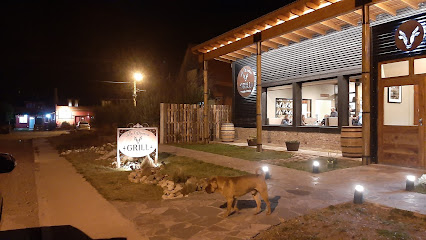
Butch, Bar de Carnes
Experience the rich flavors of Patagonia at Butch, Bar de Carnes in El Chaltén, where exceptional grilled meats meet a cozy atmosphere.

Glaciares Bar
Experience the warmth of Glaciares Bar in El Chaltén, a cozy spot to unwind with drinks and share stories after exploring Patagonia's stunning landscapes.

Local Phrases about El Chalten
-
- HelloHola
[O-la] - GoodbyeAdiós
[Ah-dee-ohs] - YesSí
[See] - NoNo
[Noh] - Please/You're welcomePor favor/De nada
[Por fa-vor/De nah-da] - Thank youGracias
[Gra-see-as] - Excuse me/SorryPerdón/Disculpa
[Per-don/Dees-kool-pah] - How are you?¿Cómo estás?
[Koh-moh es-tahs] - Fine. And you?Bien. ¿Y tú?
[Bee-en. Ee too] - Do you speak English?¿Hablas inglés?
[Ah-blahs een-glays] - I don't understandNo entiendo
[Noh en-tee-en-doh]
- HelloHola
-
- I'd like to see the menu, pleaseMe gustaría ver el menú, por favor
[May goo-sta-ree-ah ver el meh-noo, por fa-vor] - I don't eat meatNo como carne
[Noh koh-moh kahr-neh] - Cheers!¡Salud!
[Sah-loohd] - I would like to pay, pleaseMe gustaría pagar, por favor
[May goo-sta-ree-ah pah-gar, por fa-vor]
- I'd like to see the menu, pleaseMe gustaría ver el menú, por favor
-
- Help!¡Ayuda!
[Ah-yoo-dah] - Go away!¡Vete!
[Veh-teh] - Call the Police!¡Llama a la policía!
[Ya-ma a la po-lee-see-ah] - Call a doctor!¡Llama a un médico!
[Ya-ma a oon meh-dee-koh] - I'm lostEstoy perdido/a
[Es-toy per-dee-doh/dah] - I'm illEstoy enfermo/a
[Es-toy en-fer-moh/mah]
- Help!¡Ayuda!
-
- I'd like to buy...Me gustaría comprar...
[May goo-sta-ree-ah kohm-prar] - I'm just lookingSolo estoy mirando
[So-lo es-toy mee-ran-doh] - How much is it?¿Cuánto cuesta?
[Kwan-to kwe-sta] - That's too expensiveEsto es demasiado caro
[Es-to es de-ma-sya-do kah-ro] - Can you lower the price?¿Puede bajar el precio?
[Pwe-de ba-har el pree-syo]
- I'd like to buy...Me gustaría comprar...
-
- What time is it?¿Qué hora es?
[Keh o-rah es] - It's one o'clockEs la una
[Es la oo-na] - Half past (10)Son las diez y media
[Son las dee-ehs ee meh-dee-ah] - MorningMañana
[Mah-nyah-nah] - AfternoonTarde
[Tahr-deh] - EveningNoche
[Noh-cheh] - YesterdayAyer
[Ah-yehr] - TodayHoy
[Oy] - TomorrowMañana
[Mah-nyah-nah] - 1Uno
[Oo-no] - 2Dos
[Dohs] - 3Tres
[Tres] - 4Cuatro
[Kwa-tro] - 5Cinco
[Seen-ko] - 6Seis
[Says] - 7Siete
[See-eh-teh] - 8Ocho
[Oh-cho] - 9Nueve
[Nweh-veh] - 10Diez
[Dee-ehs]
- What time is it?¿Qué hora es?
-
- Where's a/the...?¿Dónde está el/la...?
[Dohn-deh es-tah el/la] - What's the address?¿Cuál es la dirección?
[Kwahl es la dee-rek-syon] - Can you show me (on the map)?¿Puedes mostrarme (en el mapa)?
[Pwe-dehs mohs-trar-meh (en el mah-pa)] - When's the next (bus)?¿Cuándo es el próximo (autobús)?
[Kwan-doh es el proh-ksee-moh (ow-toh-boos)] - A ticket (to ....)Un boleto (a ....)
[Oon boh-leh-to (ah)]
- Where's a/the...?¿Dónde está el/la...?
History of El Chalten
-
Long before the arrival of Europeans, the region around El Chaltén was inhabited by the indigenous Tehuelche people. These nomadic hunter-gatherers roamed the Patagonian steppe, relying on guanacos and rheas for sustenance. The Tehuelche left behind rock art and archaeological sites, providing a glimpse into their rich cultural heritage.
-
In the late 19th and early 20th centuries, European explorers began to chart the remote regions of Patagonia. Notable figures such as Francisco Pascasio Moreno, an Argentine explorer, and Perito Moreno, after whom the famous glacier is named, played pivotal roles in mapping the area. Their expeditions brought international attention to the stunning landscapes and rugged terrain of what is now El Chaltén.
-
In 1937, Los Glaciares National Park was established to protect the unique ecosystem and breathtaking scenery of the region. El Chaltén, located within the northern sector of the park, became a key gateway for visitors eager to explore its pristine environment, from towering peaks to expansive glaciers.
-
El Chaltén was officially founded on October 12, 1985, as a strategic move by the Argentine government to strengthen its claim over the disputed border region with Chile. The name 'El Chaltén' is derived from a Tehuelche word meaning 'smoking mountain,' referring to the clouds that often shroud Mount Fitz Roy.
-
Throughout the late 20th and early 21st centuries, El Chaltén gained renown as one of the premier trekking destinations in the world. The establishment of well-maintained trails and the growing popularity of outdoor adventure tourism attracted visitors from across the globe. The village became known as the 'Trekking Capital of Argentina,' drawing enthusiasts eager to conquer routes like Laguna de los Tres and Laguna Torre.
-
Despite its relatively recent establishment, El Chaltén has developed a distinct cultural identity. The local community is a blend of Patagonian settlers and newcomers drawn by the area's natural beauty. Annual festivals, such as the Fiesta Nacional del Trekking, celebrate the region's outdoor heritage and foster a sense of community among residents and visitors alike.
El Chalten Essentials
-
El Chalten is located in the Santa Cruz Province of Argentina, within the Los Glaciares National Park. The nearest airport is El Calafate International Airport (FTE), approximately 220 kilometers away. From El Calafate, you can take a bus, which typically takes around 3 hours and 30 minutes. Alternatively, you can rent a car for a more flexible travel schedule.
-
El Chalten is a small village, and many of its hiking trails and attractions are accessible on foot. For those who prefer not to walk, local taxis are available. There are also shuttle services that connect El Chalten with El Calafate and nearby attractions. Renting a bike is another popular option for exploring the area.
-
The official currency in Argentina is the Argentine Peso (ARS). In El Chalten, it is advisable to carry cash, as not all establishments accept credit cards. ATMs are available, but it's wise to withdraw sufficient cash in El Calafate before traveling to El Chalten, as ATMs can be less reliable in smaller towns.
-
El Chalten is generally a safe destination for tourists, with low crime rates. However, it's always best to take standard precautions: avoid walking alone at night in unlit areas, keep an eye on your belongings, and be cautious in crowded places. There are no specific high-crime areas targeting tourists in El Chalten.
-
In case of emergency, dial 107 for medical assistance and 101 for police. The local hospital in El Chalten provides basic medical care, but for serious conditions, you may need to be transferred to a larger facility in El Calafate. It's recommended to have travel insurance that covers medical emergencies.
-
Fashion: Do wear comfortable and weather-appropriate clothing, especially hiking gear. Don't wear high heels or formal attire for outdoor activities. Religion: Do respect local customs and traditions. Public Transport: Do be courteous to drivers and other passengers. Don't expect punctuality; schedules can be flexible. Greetings: Do greet people with a friendly 'Hola.' Don't be overly formal. Eating & Drinking: Do try the local cuisine, including Patagonian lamb and trout. Don't refuse a 'mate' offering; it's a social custom.
-
To experience El Chalten like a local, visit the local bakeries for fresh pastries and empanadas. Engage with locals; they are often friendly and willing to share hiking tips and stories about the area. Don't miss the sunrise view from Laguna Capri, which offers a breathtaking view of Mount Fitz Roy. For a unique experience, hire a local guide for a more in-depth exploration of the area's hidden gems.
Trending Landmarks in El Chalten
-
Chorrillo del Salto
-
Rancho Grande Hostel y Restaurante 24 hs.
-
Laguna de los Tres
-
La Cervecería Chaltén
-
Sendero al Fitz Roy
-
Heladería Domo Blanco
-
Parrilla La Oveja Negra
-
La Tapera
-
Mirador del Fitz Roy
-
Complejo turístico El Relincho
-
Patagonicus
-
PAISA High Mountain Coffee
-
Pangea Restaurant
-
Patagonia Travellers Hostel
-
Cúrcuma
Nearby Cities to El Chalten
-
Things To Do in Puerto Natales
-
Things To Do in Punta Arenas
-
Things To Do in Ushuaia
-
Things To Do in Puerto Varas
-
Things To Do in Bariloche
-
Things To Do in San Carlos de Bariloche
-
Things To Do in Osorno
-
Things To Do in Valdivia
-
Things To Do in Pucon
-
Things To Do in Temuco
-
Things To Do in Concepción
-
Things To Do in Curicó
-
Things To Do in San Rafael
-
Things To Do in Rancagua
-
Things To Do in Mar del Plata












